Photography at the Cambridge Butterfly Conservatory
Table of Contents
Located about an hour west of Toronto, The Cambridge Butterfly Conservatory offers an excellent opportunity to hone your digital photography skills when the weather outside is uncooperative. And if you happen to enjoy looking at and identifying butterflies, all the better!
If you can bring together a group of friends and get to the Conservatory at 8am, you can reserve the entire space. Having a reservation will ensure there aren't too many people and, during the 2 hour period before the public is allowed in, you'll be able to set up tripods which are not normally allowed. I lucked out and found a Meetup that had booked the conservatory.
Before I dive into the photography stuff, I wanted to give props to the staff at the Conservatory. Everyone was friendly and were happy to have us there. One of the conservatory experts, whose name escapes me, was particularly attentive and even brought out a couple of insects for us to photograph. The conservatory is worth a visit regardless of your age.
Gear to Bring
If you do go with a group in the morning, bring all of your gear. That is, don't try to pick just the right lens or filter. There are a handful of benches within the butterfly enclosure so you can put your stuff down and access whatever you need whenever you need it. A mid-zoom lens is a must. If you've got a macro lens or teleconverters bring them. And a high-zoom lens plus a tripod opens up some opportunities. I recommend a flash — the conservatory is lit and there's also daylight coming in through the windows, but you'll want as much light as possible to freeze the action.
Where to Find the Shot
There's no way to know where a butterfly is going to land so there's a bit of luck involved in being in the right place at the right time. I suggest spending the first few minutes walking around the butterfly enclosure and making note of the location of flowers that would enhance your photo.
Also check out the back left corner where the chrysalis are hanging. Don't dismiss this area too quickly. With the right angle and enough background blur, you can get some nice shots of emerging butterflies. Since they're not moving all that much, it's also a good place to get into the photo-taking zone.
After you've taken a look around, I would continue to walk slowly through the conservatory looking for photo opportunities. I would favor the more brightly lit upper areas. Also note that as the morning progresses, more and more butterflies will take flight.
Getting the Shot
Most of your shots are likely going to be close range. Some of the butterflies will be cooperative, but others will continue to move about making it nearly impossible to get a clean shot. The absolute key to an excellent photo, in my opinion, is ensuring the butterfly's head is in focus. The butterfly's antennae and wings, if they're not in the focus plane, will more likely than not be partially blurred.
Closed Wings
Butterflies typically rest with their wings closed. The good news is that you can still get a beautiful photo by including a flower. In addition, take photos with the butterfly right-side up, upside down, and sideways as the change in perspective can enhance the result. If you can get really close, some butterflies have beautiful patterns and colors on the outside of their wings e.g. Owl Butterfly.
Open Wings
If you come across a butterfly with its wings open, take the shot! Remain aware of the background though. I find that a butterfly on the ground with its wings open isn't as appealing a photo as when it's on a plant. Also, butterflies near death tend to have their wings open. Their age means their wings may be torn which can really be a distraction in a photo.
Wings Flapping
With the right foreground, blurring of the background, and sharp focus on the butterfly's head, it's possible to get a really good photo with its wings flapping. The blur can add some visual interest that is not so commonly seen.
Using a Flash
A flash will come in handy, but be careful about shining too much light. Too strong a shine on a butterfly's wings can look unnatural. In addition, a flash can wash out colors on the butterfly while also brightening the background which reduces contrast.
Note: In the wild, a flash is discouraged as it can damage a butterfly's eyes.
Using a Macro Lens or Teleconverter
If you're using a macro lens or a teleconverter, take multiple shots of the same composition. After I returned home and reviewed my photos, I noticed some close-ups were focused in the wrong area. I suspect it's because I would drift slightly between locking the focus and pressing the shutter. Even a tiny shift can ruin a shot.
Whatever lens you're using, take multiple photos of every composition with different apertures. Your aim is to blur the background as much as possible while keeping as much of the butterfly in focus. It can be difficult to assess focus problems on your camera's rear LCD.
Using a Tripod
I recommend waiting for the second half of your visit before setting up your tripod. Mounting your long zoom lens on the tripod will allow you to zero in on flowers you can't otherwise reach. And with some patience, a butterfly will land on the flower allowing you to capture a photo that most others will miss.
Gallery
Some of what I wrote above is hindsight. By using the rest of the techniques, I managed to get the following photos which I'm pretty happy with! There are dozens more that were almost good enough to post, but were just slightly out of focus so they're destined for the digital garbage can.
For more photos, check out the Meetup gallery.


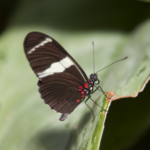
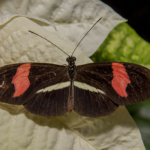
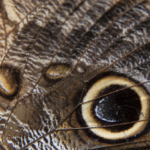
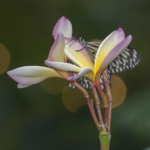
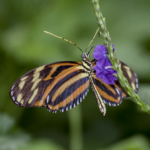

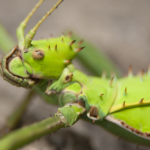
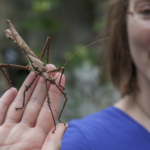
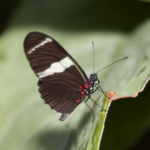
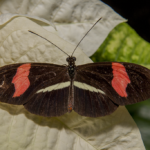
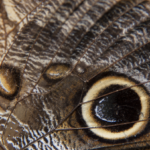
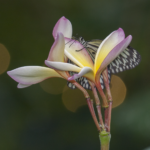
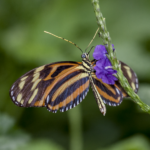
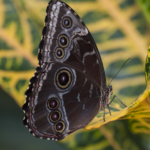

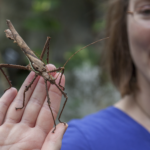
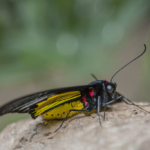
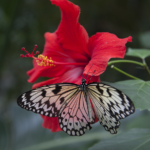
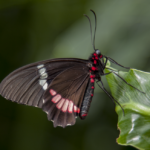

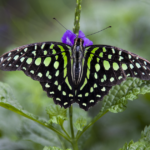

Leave a Reply